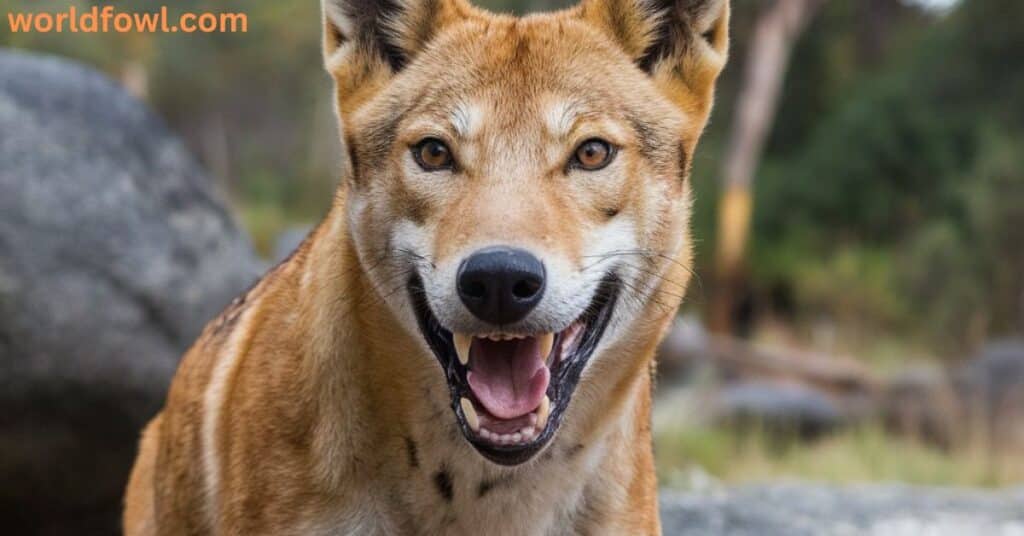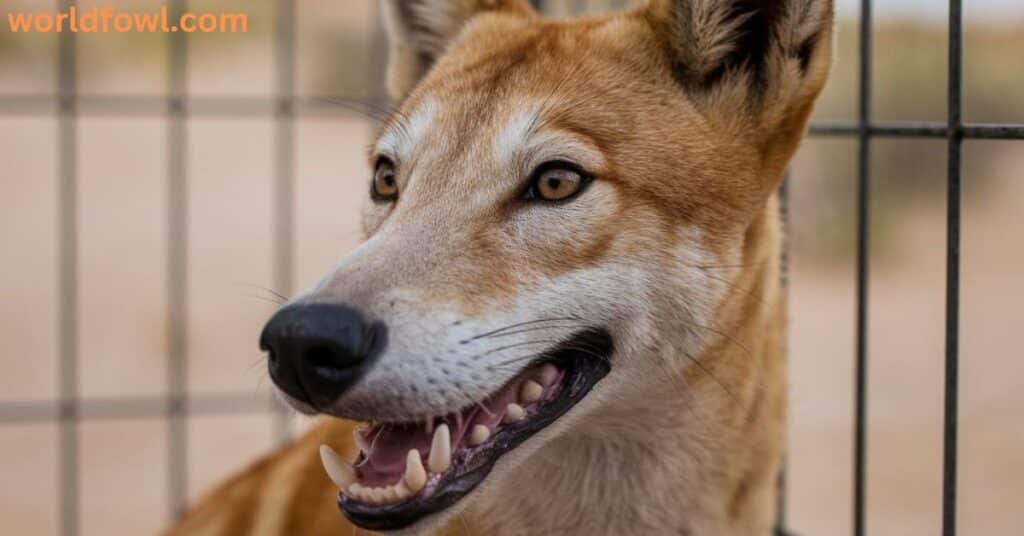Dingoes are a fascinating part of Australia’s unique ecosystem. As wild dogs, they play an important role in maintaining the balance of local wildlife populations. But there’s a common question that arises when people encounter these animals: Do Dingoes Attack Humans? In this article, we’ll delve into the truth behind this question, analyze the factors that may lead to dingo attacks, and provide practical tips on how to stay safe when in dingo territory.
What Are Dingoes? A Snapshot

Dingoes, scientifically known as Canis lupus dingo, are a type of wild dog native to Australia. While they share common ancestry with domestic dogs, they are distinct in several ways. They are not a separate species, but rather a subspecies of the gray wolf. Their origin in Australia dates back at least 4,000 years, but some studies suggest they may have arrived much earlier. Dingoes are medium-sized animals, typically weighing between 13 to 24 kilograms (29 to 53 pounds), and have a lean, muscular build that aids them in hunting.
Physical Characteristics of Dingoes
- Size: Dingoes vary in size but typically stand around 50 to 60 cm (20 to 24 inches) at the shoulder.
- Fur: Their coat color can range from sandy, yellow, and red to more unusual black and tan combinations. Their fur provides camouflage, allowing them to blend into the Australian wilderness.
- Teeth: Like other wild dogs, dingoes have strong, sharp teeth designed for hunting and consuming prey.
Habitat and Range
Dingoes can be found across the Australian continent, from the deserts to coastal regions like Fraser Island—the world’s largest sand island and a hotspot for dingo populations. They have adapted to a wide range of environments, from dry, arid landscapes to forests, making them extremely resilient animals. While dingoes are generally more active during dusk and dawn, they have been known to roam day and night, especially in areas with abundant food sources.
See Also : Do Wild Pigs Attack Humans?
Behavioral Traits of Dingoes

Understanding dingo behavior is crucial for answering the question: Do Dingoes Attack Humans? Dingoes are predators, but their interactions with humans are usually minimal. Their behavior can vary based on numerous factors, such as their upbringing, social structure, and past experiences with humans.
Dingo Pack Structure
Dingoes typically live in family groups known as packs. These packs can range in size from a few individuals to as many as 10 or more. Within a pack, there is a clear territorial behavior. They mark their territory with scent markings and will defend it fiercely from other animals. A lone dingo may display more cautious behavior, avoiding human settlements altogether. However, if a dingo becomes habituated to human presence, it may become more confident and potentially aggressive, especially if it associates humans with food.
Diet and Predatory Behavior
Dingoes are apex predators in their environment, primarily feeding on small to medium-sized animals such as kangaroos, wallabies, and smaller mammals. Their predatory instincts make them highly skilled hunters, but they are also opportunistic feeders. Feeding wildlife, such as leaving food scraps in public areas, can attract dingoes to human settlements. This habit of seeking out food from humans can increase the likelihood of an attack, especially if the dingo feels threatened or cornered.
Dingo Communication and Socialization
Dingoes communicate with each other through vocalizations, body language, and scent marking. They may be cautious around humans unless they have been conditioned otherwise, especially in areas where they have become familiar with human presence. However, in rare cases, a dingo may become more aggressive if it perceives humans as a threat or if it is hungry.
See Also : Do Armadillos Attack Humans? The Startling Reality!
Do Dingoes Attack Humans? Debunking Myths and Understanding Real Risks

When it comes to the question, Do Dingoes Attack Humans?, it’s important to note that dingo attacks on humans are rare. The vast majority of dingoes prefer to avoid human contact. However, incidents do occur, and understanding the circumstances that lead to attacks can help mitigate potential risks.
Frequency of Dingo Attacks on Humans
While dingo attacks are not common, they do happen. The risk of being attacked by a dingo is relatively low compared to other wild animals. Based on available data, there have been fewer than a dozen confirmed fatal dingo attacks in the past century. The most famous case is the Azaria Chamberlain incident in 1980, where a young child was taken by a dingo in the Australian Outback, leading to a nationwide media frenzy and public concern. However, this event is considered an outlier.
In most cases, dingo attacks are not fatal, and injuries are generally mild. Attacks are more likely to occur in areas where dingoes have become habituated to human presence or where humans encroach on their territory.
Human Behavior and Dingo Attacks
Humans are rarely the primary targets of dingoes. However, certain factors can increase the likelihood of an attack:
- Feeding or approaching dingoes: Humans who feed dingoes or get too close to them can provoke an attack. Feeding wildlife leads to dingoes associating humans with food, which can make them bolder and less fearful.
- Protecting their territory or pups: Dingoes may attack if they feel their pack members or territory is being threatened.
- Habituation: Dingoes that have had frequent interactions with humans, especially in urban or tourist areas, may lose their natural wariness, leading to potential conflicts.
The Role of Human-Wildlife Interactions
In many cases, human-wildlife interactions are a contributing factor to dingo attacks. Over time, as humans invade more of the dingo’s natural habitat, the likelihood of interactions increases. In areas like Fraser Island, where humans and dingoes coexist, there are specific wildlife safety guidelines that tourists must follow to avoid risky encounters. For example, it’s advised to keep food sealed, avoid leaving food scraps, and stay at a safe distance from dingoes.
See Also : Do Guinea Fowl Attack Humans? The Silent Stalkers!
Factors That Contribute to Dingo Attacks

Dingo attacks are not a random occurrence. They are typically the result of a combination of factors, including environmental stress, habituation, and human actions. Understanding these contributing factors can help reduce the risk of an attack.
Environmental Stress
In times of food scarcity or extreme weather conditions, dingoes may become more aggressive or desperate. They may be more inclined to approach human settlements in search of food, which can lead to dingo attacks. During these periods, dingoes may lose their natural fear of humans, especially if they have previously been fed by people.
Territorial Behavior
Dingoes are highly territorial animals. When their territory is encroached upon, particularly if they are with their young or part of a hunting pack, they may view humans as a threat and become defensive. This territoriality is more pronounced in isolated wild environments but can also occur near urbanized areas.
Human Actions: Feeding and Approaching
Feeding or attempting to approach dingoes can lead to dangerous interactions. When dingoes associate humans with food, they may become emboldened and less cautious. This habituation increases the likelihood of future confrontations. Furthermore, people who get too close to dingoes, especially mothers with pups, may trigger defensive aggression.
Notable Incidents: Real-Life Dingo Attacks
The Azaria Chamberlain incident in 1980 remains the most widely known case of a dingo attack on a human. Azaria, a young child, was taken by a dingo while camping in the Northern Territory. This incident led to a significant public outcry and increased fear about the safety of humans around dingoes.
However, incidents like these are exceptions, not the rule. Most dingo attacks are not fatal and are often the result of the dingo being provoked or having had prior negative experiences with humans.
Case Study: The Azaria Chamberlain Incident
In 1980, a nine-week-old baby girl, Azaria Chamberlain, was taken from a tent by a dingo in the Australian Outback. This tragic event sparked widespread media attention and led to a highly publicized trial. The attack was confirmed by a dingo expert, and it remains the most infamous dingo attack to date.
However, this incident led to a broader examination of human-dingo interactions and the need for better wildlife safety guidelines in areas where dingoes are present.
See Also : Do Capybaras Attack Humans? The Truth!
Are Dingo Attacks Dangerous? Analyzing the Severity

Though dingo attacks can be frightening, the severity of the attacks is typically low. Most injuries from dingoes are minor and treatable. Fatalities are extremely rare. In fact, the Apex predator role that dingoes play within their environment means that they generally avoid humans unless provoked or desperate.
Injuries from Dingo Attacks
The majority of dingo attacks result in bites or scratches, which are rarely life-threatening. In some cases, bites can become infected if not treated, but with proper medical care, these injuries are typically manageable.
The Risk of Disease
Like many wild animals, dingoes can carry diseases that may pose a risk to humans. However, the risk of contracting a disease from a dingo is minimal. Rabies is not found in Australian wildlife, and the primary concerns are bacteria like tetanus or parasites that may be transmitted through bites or scratches.
How to Prevent Dingo Attacks: Staying Safe in Dingo Territory
While dingo attacks are rare, there are some basic human safety guidelines that can help reduce the risk of an encounter. Here are a few key practices:
Do Not Feed Dingoes
Feeding dingoes encourages them to associate humans with food, which can lead to more aggressive behavior. Always keep food securely stored, and dispose of waste properly.
Keep a Safe Distance
If you encounter a dingo, maintain a respectful distance. Do not attempt to approach or touch the animal, and never attempt to pet it.
Follow Local Safety Guidelines
Areas like Fraser Island have specific wildlife safety guidelines for tourists. These include keeping food in sealed containers, avoiding walking alone, and keeping a safe distance from dingoes.
Stay Calm in the Event of an Encounter
If a dingo approaches, remain calm. Do not run or make sudden movements, as this can trigger the dingo’s predatory instincts. Instead, try to appear larger by raising your arms and backing away slowly.
Final Verdict: Should You Be Worried About Dingo Attacks?
The short answer is no, dingo attacks on humans are rare, and with proper precautions, the risk of encountering a dangerous situation is minimal. Dingoes are not inherently aggressive, and most attacks happen when humans provoke the animals or fail to follow safety guidelines. Respect for their natural behaviors and habitats, combined with responsible wildlife interactions, can ensure safe and enjoyable experiences in dingo territories.
Final Thoughts on Human-Dingo Interactions
In conclusion, dingoes are an integral part of Australia’s wild ecosystems, playing an important role as predators. While rare, dingo attacks can occur, especially when humans fail to understand and respect dingo behavior. By following the proper wildlife safety guidelines, we can coexist with these fascinating creatures while minimizing any risks.
FAQs: Do Dingoes Attack Humans
- How common are dingo attacks on humans?
Dingo attacks on humans are rare, with fewer than a dozen fatalities in the last century. - What attracts dingoes to humans?
Dingoes are often attracted by food, especially if humans feed them or leave food accessible. - Are dingoes aggressive by nature?
Dingoes are not inherently aggressive but may attack if threatened, hungry, or if their territory is encroached upon. - What should you do if a dingo follows you?
Stay calm, avoid running, and try to make yourself appear larger. Slowly back away from the dingo. - Can dingoes be tamed or kept as pets?
Dingoes are wild animals and are not suitable as pets. Their behavior is fundamentally different from domesticated dogs.
By understanding dingo behavior and how to safely interact with them, you can enjoy the beauty

Henry James is a seasoned blogger and a passionate storyteller on “World Fowl.” With years of experience crafting engaging content, he brings a unique blend of expertise and creativity to his writing. Henry specializes in exploring diverse topics with depth and clarity, captivating readers worldwide.







